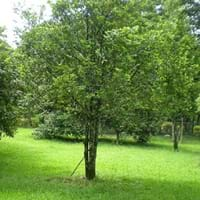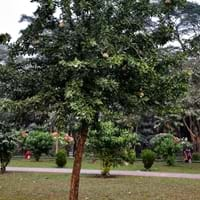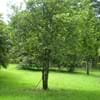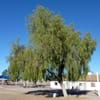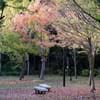Life Span
Perennial
Perennial
Origin
Central Asia, Eastern Europe, Europe, Nepal, Southern Asia, Southern Europe
Bangladesh, India, Pakistan, Sri Lanka, Tropical Indomalaya
Types
Not Available
Not Available
Number of Varieties
Not Available
Habitat
Cold Regions, Hills, Hillside
Dry areas
USDA Hardiness Zone
9-11
Not Available
AHS Heat Zone
7-1
Not Available
Sunset Zone
1a, 1b, 2a, 2b, 3a, 3b, 4, 5, 6, 7, 8, 9, 14, 15, 16, 17, 18, 19, 20, 21
Not Available
Habit
Oval or Rounded
Not Available
Flower Color
Not Available
White
Flower Color Modifier
Bicolor
Not Available
Fruit Color
Green, Brown
Greyish Brown, Light Green, Not Available
Leaf Color in Spring
Green, Copper
Green
Leaf Color in Summer
Dark Green
Dark Green
Leaf Color in Fall
Green
Green
Leaf Color in Winter
Green
Gray Green
Plant Season
All year
Autumn
Sunlight
Full Sun
Full Sun, Partial Sun
Growth Rate
Medium
Medium
Type of Soil
Clay, Loam, Sand
Rich
The pH of Soil
Acidic, Neutral
Acidic, Neutral
Soil Drainage
Well drained
Well drained
Bloom Time
Late Spring, Early Summer
Late Fall
Tolerances
Not Available
Drought
Where to Plant?
Ground
Ground, Pot
How to Plant?
Budding, Seedlings
Budding, Layering, root cutting, Seedlings
Plant Maintenance
Medium
Low
Watering Requirements
Requires watering in the growing season, Water Deeply, Water when top layer of soil becomes dry
Do not water excessively
In Summer
Lots of watering
Lots of watering
In Spring
Moderate
Moderate
In Winter
Average Water
Average Water
Soil pH
Acidic, Neutral
Acidic, Neutral
Soil Type
Clay, Loam, Sand
Rich
Soil Drainage Capacity
Well drained
Well drained
Sun Exposure
Partial Sun, Partial shade
Full Sun, Partial Sun
Pruning
In Early Autumn, Prune to stimulate growth, Remove dead leaves
Prune after harvesting, Remove dead or diseased plant parts
Fertilizers
fertilize in spring, Nitrogen
for fruiting plants, use high phosphorous content fertilizer
Pests and Diseases
Anthracnose, Armillaria mellea, Blight, Caterpillars, Crown gall, Crown rot, fungus, Powdery mildew, Red blotch
Not Available
Plant Tolerance
Drought, Frost
Drought
Flower Petal Number
Single
Single
Fragrant Bark/Stem
Yes
No
Foliage Texture
Medium
Medium
Foliage Sheen
Glossy
Matte
Attracts
Aphids, Bees, Beetles, Caterpillar, Small mammals
Not Available
Allergy
Abdominal distension, flushing of face, hallucinations, Headache, Pollen
Gastric
Aesthetic Uses
Not Used For Aesthetic Purpose
Not Used For Aesthetic Purpose
Beauty Benefits
Good for skin and hair
Good Cleanser
Environmental Uses
Absorbs greenhouse gases, Absorbs huge amounts of CO2, Air purification, Amazing growth rate, Erosion control, Food for birds, Food for insects, Forms dense stands, Nesting sites for birds, Prevent Soil Erosion, Shadow Tree, Shelter for wildlife, Windbreak
Not Available
Medicinal Uses
Anemia, anti-cancer, Antispasmodic, Asthma, Diarrhea, Healing, Stomach spasms, Thoat infection
Blood cleanser, Diabetes, Ear ache, Energy, Kidney problems, Liver Protection, Malaria, Respiratory Disorders, scurvy, Snakebite
Part of Plant Used
Fruits, Seeds
Fruits
Other Uses
Making deodorants, Oil is used for aromatherapy, Oil is used in mosquito repellents, Used as a laxative, Used for its medicinal properties, Used for making soaps, Used in biomass
Used As Food, Used for its medicinal properties
Used As Indoor Plant
No
No
Used As Outdoor Plant
Yes
Yes
Garden Design
Container, Groundcover
Edible, Fruit Tree
Botanical Name
Myristica fragrans
Limonia acidissima
Common Name
Nutmeg
Wood apple, monkey fruit, curd fruit
In German
Muskatnuss
Indischer Holzapfel
In French
noix de muscade
Kawista
In Spanish
nuez moscada
Kawista
In Greek
μοσχοκάρυδο
γλυκό ασβέστη
In Portuguese
noz-moscada
Limonia
In Polish
gałka muszkatołowa
Feronia słoniowa
In Latin
nutmeg
dulcis ad cinerem
Phylum
Magnoliophyta
Magnoliophyta
Class
Magnoliopsida
Magnoliopsida
Order
Magnoliales
Sapindales
Clade
Angiosperms, Monocots
Angiosperms, Eudicots
Subfamily
Myrtoideae
Aurantioideae
Properties of Nutmeg and Wood Apple
Wondering what are the properties of Nutmeg and Wood Apple? We provide you with everything About Nutmeg and Wood Apple. Nutmeg doesn't have thorns and Wood Apple doesn't have thorns. Also Nutmeg does not have fragrant flowers. Nutmeg has allergic reactions like Abdominal distension, flushing of face, hallucinations, Headache and Pollen and Wood Apple has allergic reactions like Abdominal distension, flushing of face, hallucinations, Headache and Pollen. Compare all the properties and characteristics of these two plants. Find out which of these plant can be used as indoor plant. If you are interested to decorate your house and garden, find out aesthetic uses, compare them and select the plant which will beautify your surrounding. Along with beautification, try comparing medicinal and edible uses of Nutmeg and Wood Apple and you can choose the plant having best and most benefits.
Season and Care of Nutmeg and Wood Apple
Season and care of Nutmeg and Wood Apple is important to know. While considering everything about Nutmeg and Wood Apple Care, growing season is an essential factor. Nutmeg season is All year and Wood Apple season is All year. The type of soil for Nutmeg is Clay, Loam, Sand and for Wood Apple is Rich while the PH of soil for Nutmeg is Acidic, Neutral and for Wood Apple is Acidic, Neutral.
Nutmeg and Wood Apple Physical Information
Nutmeg and Wood Apple physical information is very important for comparison. Nutmeg height is 1,000.00 cm and width 1,220.00 cm whereas Wood Apple height is 800.00 cm and width 900.00 cm. The color specification of Nutmeg and Wood Apple are as follows:
Nutmeg flower color: Not Available
Nutmeg leaf color: Green and Copper
Wood Apple flower color: White
- Wood Apple leaf color: Green
Care of Nutmeg and Wood Apple
Care of Nutmeg and Wood Apple include pruning, fertilizers, watering etc. Nutmeg pruning is done In Early Autumn, Prune to stimulate growth and Remove dead leaves and Wood Apple pruning is done Prune after harvesting and Remove dead or diseased plant parts. In summer Nutmeg needs Lots of watering and in winter, it needs Average Water. Whereas, in summer Wood Apple needs Lots of watering and in winter, it needs Average Water.
